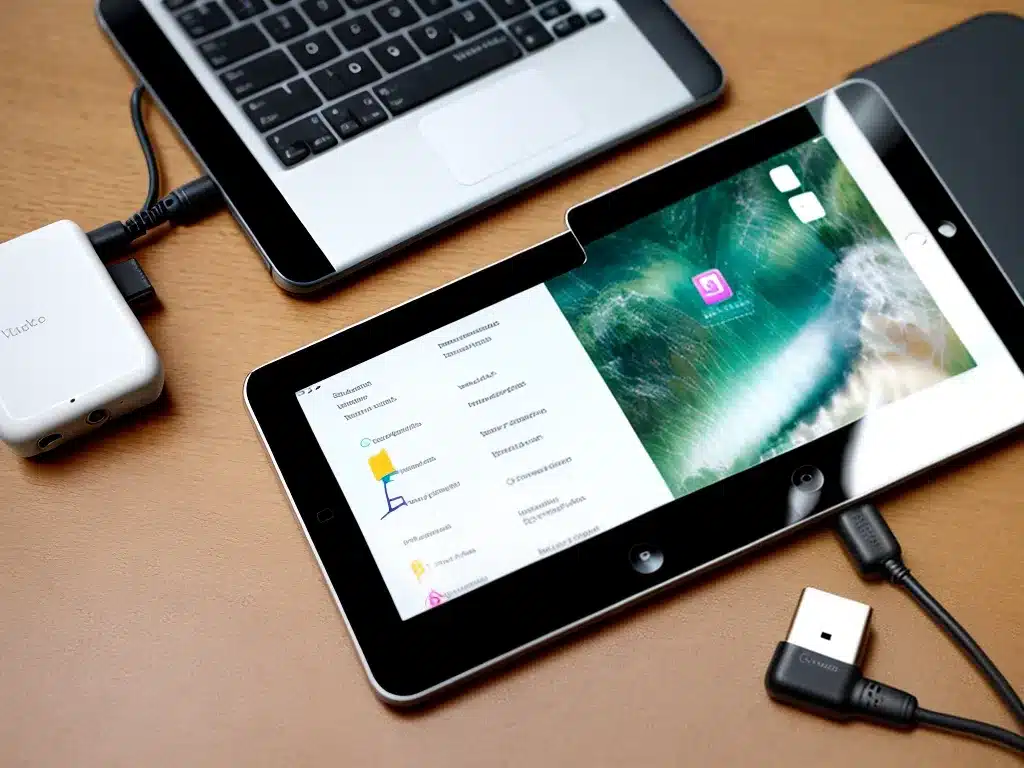Common Causes of Charging Issues
As iPads and iPhones get older, it’s common to experience problems with charging. There are a few main causes of charging issues on old iOS devices:
Dirty Charging Port
Over time, lint and debris can build up in the charging port, preventing a solid connection between the charging cable and the port. This is one of the most common reasons an old iPhone or iPad won’t charge properly. The amount of pocket lint and dust that can accumulate in the charging port is surprising.
To fix this, use a toothpick or soft-bristled brush to gently clean out the charging port. Compressed air can also work well. Be very careful not to damage the delicate pins inside the port. After cleaning it out, try plugging in your charging cable again to see if it fixed the issue.
Worn Out Charging Cable
Another frequent culprit is a worn out charging cable. Apple cables are prone to fraying or breakage after being bent and twisted hundreds of times. Examine your Lightning or 30-pin charging cable for damage. Try plugging it into another device to see if the cable itself is the issue. If the cable is damaged or defective, replacing it with a high-quality new cable will likely resolve your charging problems.
Faulty Charging Port
In some cases, the charging port itself can be broken, damaged, or filled with debris that can’t easily be removed. If cleaning doesn’t fix the issue, the charging port may need to be repaired or replaced. This requires professional microsoldering skills and disassembly of the device. For an older iPhone or iPad that’s worth less than a few hundred dollars, it’s often not worth paying for port repairs.
Battery Issues
An old, worn out battery that can’t hold much of a charge is another possibility. Battery life naturally degrades over time and hundreds of charge cycles. If your iOS device shuts off abruptly even when plugged in, the battery probably needs to be replaced by an experienced technician. iPads and iPhones older than 5 years often have batteries in poor condition.
Step-by-Step Charging Troubleshooting
Here are the steps I recommend for systematically diagnosing and fixing charging problems:
-
Inspect the charging cable for damage and try different cables – Cables often go bad before the port does. Try your cable with another device or switch to a brand new cable.
-
Carefully clean out the charging port – Lint and debris buildup is a leading cause of charging failures. Use a toothpick, brush, or compressed air to gently clear out the port.
-
Update iOS software and reset device settings – Software issues can sometimes interfere with charging. Updating and resetting clears up software gremlins.
-
Check for battery issues – Download a battery diagnostic app or have the battery tested by a repair shop. If the battery capacity is less than 80%, have it replaced.
-
Inspect the charging port for damage – Shine a flashlight into the port and look for damaged or bent pins. If there is obvious damage, the port likely needs professional microsoldering repair.
-
Try charging with multiple wall adapters – Use official Apple wall adapters as well as third-party adapters to test if the issue is adapter-related.
-
Contact Apple support and an authorized service provider – For hardware issues that you can’t resolve yourself, seek help from Apple techs and reputable repair shops to fix or replace the faulty component.
With some basic troubleshooting, you can often get an aging iPhone or iPad charging again. But for serious port or battery issues, professional repairs may ultimately be needed.
Maintaining Your Device to Prevent Charging Problems
Here are some tips to keep your iOS devices charging properly for years:
-
Don’t yank the cable – Pull cables out gently to prevent port and cable damage.
-
Keep the port clean – Periodically use compressed air to clear dust.
-
Don’t charge near liquids – Exposure to liquids can short circuit the port.
-
Avoid using third-party cables – Stick with MFi-certified Lightning cables for safety.
-
Don’t keep devices charging overnight – Heat degrades batteries faster.
-
Replace old batteries – Have the battery swapped every 3 years or 500 cycles.
-
Install iOS updates – Updates often include charging fixes.
With proper maintenance and care, you can get up to 5 years or more of normal charging on your iPad or iPhone’s original charging port and battery. But due to the everyday wear and tear mobile devices are subjected to, charging problems on old iPhones and iPads are very common. By methodically troubleshooting the issue and taking preventative measures, you can maximize the charging lifespan and functionality of your iOS devices.













